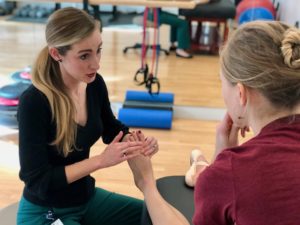
Dracula and The Nutcracker might not be the first things that come to mind when you think about professional sport injuries, but studies show these performances are tough on dancers.
A study at the University of Wolverhampton in England found 80% of professional ballet dancers have at least one injury per year that affects their ability to perform, compared to a 20% injury rate for football players. What differs between the professions is the accessibility of a medical team specially trained to get them back to dancing.

“When it comes to professional sports, we try everything possible to get football players and baseball players back on the field,” said Dr. Megan Meier, Mercy family medicine and sports medicine physician. “There are entire medical and physical therapy teams dedicated to those sports, but dancers are often told not to dance or find another sport when they are injured.”
That’s changed for the dancers of the Oklahoma City Ballet because of a unique relationship in which Mercy has become the ballet’s official medical provider, and Dr. Meier serves as the company physician. This collaboration between Mercy and the ballet is rare, one of only a few known programs in the world.
A former ballet dancer with years of experience in many types of dance, Dr. Meier specializes in dance medicine and experienced her own career-ending injury on the stage.

“I had a run of the mill ankle sprain my senior year of high school,” Dr. Meier said.
Dr. Meier said she was told to stop dancing and wear an air cast. She was not referred to physical therapy or told how to change her technique to avoid another injury.
“My experience as a dancer made me really passionate about becoming the kind of physician who understands a dancer’s injuries and can help connect the dots between diagnosis and treatment,” Dr. Meier said. “Dancers are a hard group to rehabilitate because if we don’t treat them appropriately, we can cause their injury to heal in a way that makes them too stiff or leaves them with an unstable joint. Improper treatment and rehabilitation can end their career. It’s a delicate tightrope to walk just based on the biometrics of a dancer’s job.”

